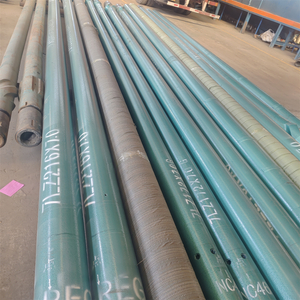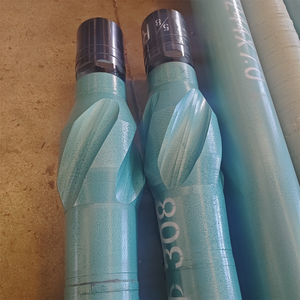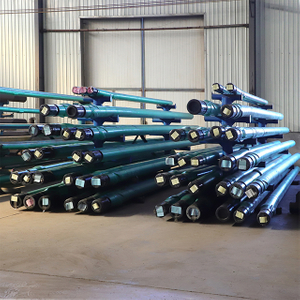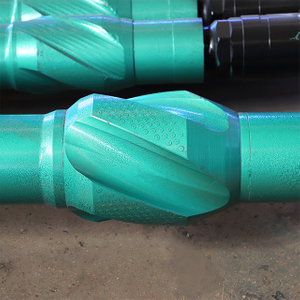In the oil and gas industry, downhole motors play a crucial role in drilling operations by converting hydraulic energy into mechanical rotation, enabling high-performance drilling in challenging subsurface conditions. These motors, primarily positive displacement motors (PDMs) or progressive cavity motors (PCMs), rely on elastomeric stators to function efficiently.
Elastomers are essential in downhole motor applications due to their ability to withstand extreme temperatures, aggressive drilling fluids, and mechanical stresses. Without elastomers, downhole motors would experience rapid failures, reducing drilling efficiency and increasing operational costs. This article explores the fundamental properties of elastomers, their role in mitigating downhole motor failures, and their application in optimizing drilling performance.
Fundamental Properties and Classification of Elastomers
Elastomers are a class of polymers with rubber-like flexibility and resilience. Their ability to deform under stress and return to their original shape makes them ideal for downhole motor applications. Some key properties of elastomers include:
High elasticity and flexibility – essential for maintaining sealing integrity.
Resistance to temperature variations – crucial for stability in extreme environments.
Chemical resistance – vital for withstanding aggressive drilling fluids.
Durability under mechanical stress – necessary for prolonged usage in downhole motors.
Classification of Elastomers Used in Downhole Motors
Elastomers used in downhole motor applications are categorized based on their chemical composition and performance characteristics:
| Elastomer Type |
Key Properties |
Typical Applications in Downhole Motors |
| Nitrile Rubber (NBR) |
Good oil and fuel resistance, moderate temperature capability |
Standard downhole motor stators and seals |
| Hydrogenated Nitrile Rubber (HNBR) |
Improved thermal and chemical resistance compared to NBR |
High-performance downhole motors in harsh environments |
| Fluoroelastomers (FKM/Viton) |
Excellent heat and chemical resistance |
Used in high-temperature drilling operations |
| Ethylene Propylene Diene Monomer (EPDM) |
Good resistance to water and steam, limited oil resistance |
Specialty sealing applications in downhole motors |
The selection of elastomers depends on the specific operational requirements of downhole motors, such as temperature, pressure, and fluid compatibility.
Operational Environment and Challenges of Downhole Motors
Extreme Downhole Conditions
Downhole motors operate in some of the harshest environments on Earth. The conditions include:
High temperatures exceeding 200°C (392°F) in deep wells.
Extreme pressures reaching up to 20,000 psi in high-pressure drilling.
Exposure to aggressive drilling fluids containing hydrocarbons, water, and corrosive chemicals.
Mechanical wear and tear from continuous rotation, torque, and stress.
These extreme conditions necessitate the use of durable and resilient materials like elastomers to ensure reliable motor performance.
Failure Modes of Downhole Motors
Without proper elastomeric components, downhole motors are prone to several failure modes:
Stator degradation – Elastomer stators wear out due to high torque and temperature cycling.
Seal failure – Loss of sealing integrity leads to fluid ingress and motor malfunction.
Chemical attack – Drilling fluids degrade elastomer materials, causing swelling or cracking.
Fatigue failure – Repeated stress cycles lead to elastomer breakdown, reducing motor lifespan.
Role of Elastomers in Mitigating Risks
Elastomers play a vital role in preventing downhole motor failures by:
Enhancing motor efficiency through effective stator-rotor interaction.
Providing superior sealing capabilities to prevent fluid contamination.
Absorbing mechanical shocks and vibrations to protect motor components.
Resisting harsh chemicals to extend motor operational life.
By incorporating high-performance elastomers, downhole motors achieve greater reliability, reduced downtime, and improved drilling efficiency.
Applications of Elastomers in Downhole Motors
Elastomer Stators in Progressive Cavity Motors (PCMs)
One of the most critical applications of elastomers in downhole motors is in progressive cavity motors (PCMs). These motors consist of a metallic rotor and an elastomeric stator, where the elastomer forms cavities that allow fluid movement, generating rotational torque.
Advantages of elastomer stators in PCMs include:
High torque output for efficient drilling.
Flexibility to accommodate rotor misalignment and reduce wear.
Improved sealing performance for consistent motor operation.
Critical Sealing Components
Seals are another crucial application of elastomers in downhole motors. These components ensure fluid containment and prevent contamination of internal motor parts.
Common elastomeric seals in downhole motors include:
O-rings – Prevent fluid leakage in motor joints.
Lip seals – Protect bearings and rotating shafts from debris.
Packers and gaskets – Maintain pressure integrity in high-pressure environments.
Vibration Damping and Shock Absorption
During drilling operations, downhole motors experience significant vibrations and mechanical shocks. Elastomers act as damping materials, absorbing these forces and preventing premature component failure.
Key benefits of elastomer-based damping systems:
Reduced wear on motor components for longer service life.
Enhanced directional drilling accuracy by minimizing motor deflections.
Lower maintenance costs due to improved durability.
Chemical and Oil Resistance
Elastomers used in downhole motors must withstand aggressive drilling fluids, including:
Hydrocarbons that can cause swelling or degradation.
Water-based and synthetic drilling muds that may react with elastomers.
High-salinity brines that can accelerate material breakdown.
To address these challenges, advanced elastomer formulations such as HNBR and FKM are used for superior chemical resistance and longer operational lifespan.
Conclusion
Elastomers are indispensable in downhole motors, providing essential properties such as flexibility, durability, and chemical resistance. Their applications in progressive cavity motor (PCM) stators, sealing components, vibration damping, and chemical resistance ensure reliable motor performance in extreme drilling environments.
Selecting the right elastomer material is critical for optimizing motor longevity, reducing failure rates, and improving drilling efficiency. As the oil and gas industry continues to push the limits of drilling technology, advancements in elastomer formulations will play a key role in enhancing downhole motor performance.
FAQs
1. Why are elastomers used in downhole motors?
Elastomers provide flexibility, chemical resistance, and durability to downhole motor components, ensuring efficient operation in harsh drilling environments.
2. What is the most common elastomer used in downhole motor stators?
Nitrile Rubber (NBR) and Hydrogenated Nitrile Rubber (HNBR) are commonly used due to their excellent oil resistance and mechanical properties.
3. How do elastomers improve the lifespan of downhole motors?
Elastomers enhance sealing performance, absorb vibrations, and resist chemical degradation, reducing wear and extending motor life.
4. What challenges do elastomers face in downhole motors?
Extreme temperatures, high pressures, aggressive drilling fluids, and mechanical stresses can degrade elastomers over time.
5. Are there alternatives to elastomers in downhole motors?
While some high-performance polymers or composites are explored, elastomers remain the most effective material for stators and seals due to their unique properties.



















